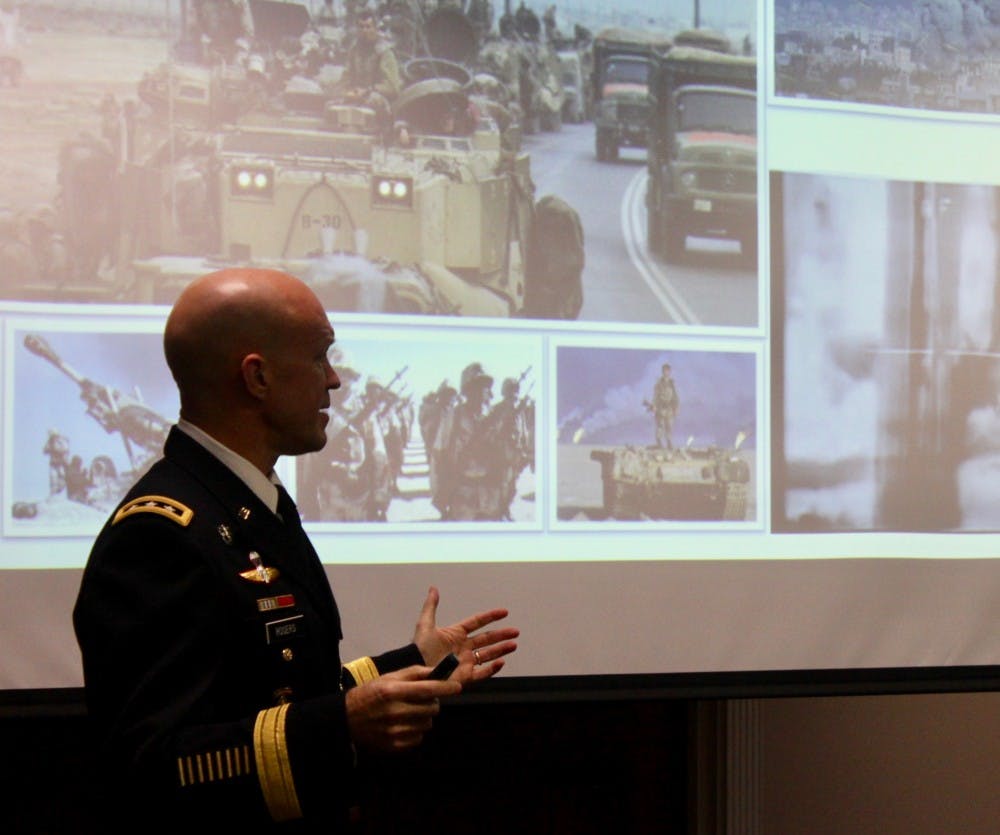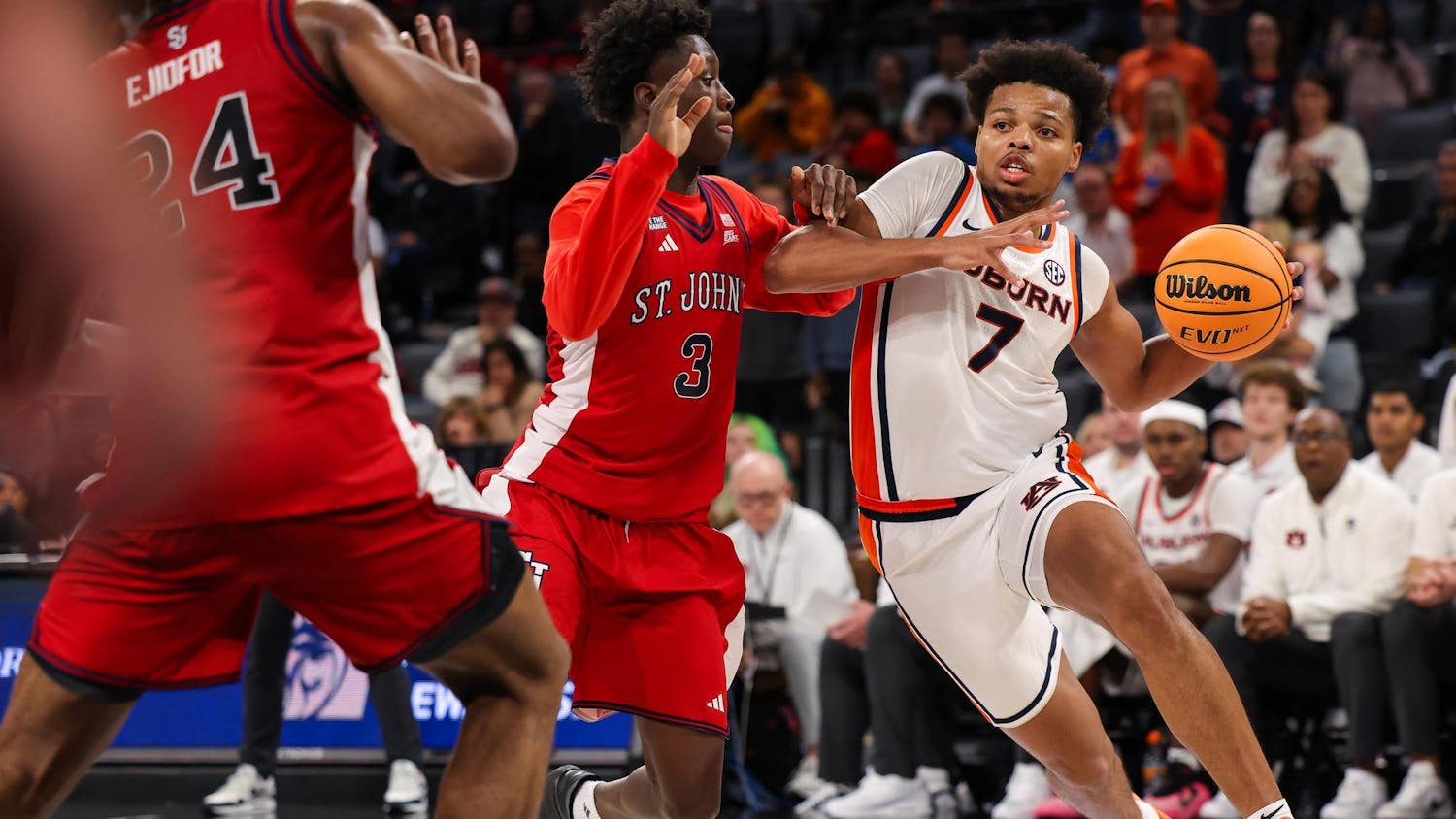Auburn University has many important, prominent alumni, but only a select few are invited back to speak at their alma mater. Lt. Gen. Darsie Rogers is among the ranks of alumni honored through this tradition.
Rogers, who graduated from Auburn in 1987 and was commissioned a second lieutenant, is the deputy director of the defense threat reduction agency.
He returned for the Family Friday Speaker Series to give a talk titled, "Information and Technology Challenges Facing Our Military Today and in the Future.”
Likening his life to that of Forrest Gump, Rogers spoke on his experiences serving in the armed forces and being in the right place at the right time.
“If you remember in the movie, Forrest Gump wasn’t really about Forrest,” Rogers said. “He was always in these places where these important events were happening around him and you’re looking at Forrest, and then next thing you know some critical event that changed the face of the nation. I’ve been either at the right or wrong place at a special time when something happened.”
Roger’s served his first tours during operations Desert Shield and Desert Storm, which he detailed as straightforward, conventional warfare fought using precision-guided warheads and tanks in Iraq.
“And as a young second lieutenant working in a conventional organization, this was just magnificent to see this army and air firepower, where we combined air and ground forces to strike, deep-cut off the head, eliminate the resistance and then the supporting ground forces came in with the M1 tank, the Bradley fighting vehicle and the Apache and really delivered a serious blow to the enemy,” Rogers said. “If you’ll remember that fight was over in about 100 hours or so.”
He detailed the message that this sent to the opposition, which inspired them to move to the next phase of warfare.
“The enemy realized they could not fight us toe-to-toe,” Rogers said. “They had to go with very unconventional, very uncommon techniques.”
Rogers' next Forrest Gump moment was when he was present in the Pentagon on 9/11. When the planes hit the Pentagon, he was mere feet from the secretary of defense. When the second plane hit the World Trade Center, he was in the office of one of the joint chiefs of staff.
“Nobody knew what was really going on,” Rogers said. “I was sitting in his office when the second plane hit the World Trade Center, and he looked at me and said, ‘We’re under attack.'”
He was taken to the National Military Command Center and near the secretary of defense was. When the air force career general said, “Did you feel that? We just got hit.”
Roger’s related the changes made to warfare as a result of 9/11 and fighting a war against a non-traditionally organized enemy.
“We had to completely rethink our way of fighting warfare at the time,” Rogers said.
To adapt to the new form of warfare, the U.S. armed forces went into Afghanistan to team up with the local warlords and bring in special forces.
Rogers was the commander of special forces chosen to brief the secretary of state on the plan for the invasion plan in Afghanistan.
“You think you’re a major in the Pentagon digging ditches one day, and the next thing you know, the world changes and you’re briefing the secretary of state of the most powerful country in the world on our invasion to Afghanistan,” Rogers said.
With the invasion of Iran, warfare shifted once again, and Rogers was part of the special forces fighting insurgents and countering the improvised explosive devices.
The next shift in warfare was the arrival of the Islamic State in Iraq and Syria.
“They tried to fight a very conventional fight, and we hammered them,” Rogers said.
Arab Shift came next supported by social media and weaponized commercial drones that drop bombs or do reconnaissance, which was used by the Boston Marathon bomber.
“So here is the perfect scenario of how technology has evolved over the years and the things that we now see all over the globe,” Rogers said.
Both bombers immigrated to America, were radicalized through social media and learned to build their bomb from propaganda.
“Folks, that is hard to beat,” Rogers said. “It is not defeated by tanks and Bradleys, and that’s the challenge that our service members face today.”
Rogers outlined the military’s struggle with finding a balance between being good at traditional warfare and adapting to the methods that catch this new form of warfare.
“We fight a learning enemy every day,” Rogers said.
However, Rogers said that he is optimistic about the future of the military, citing the talent and dedication of those who follow him.
“There is some good news,” Rogers said as he pointed to a slide of young members of the military. “That’s the good news right there. Those young people that represent our nation are doing a fantastic job. I would have never made it here today if I had to compete with the people who work for me now. They are that good.”
Do you like this story? The Plainsman doesn't accept money from tuition or student fees, and we don't charge a subscription fee. But you can donate to support The Plainsman.





